Introduction to Hummingbird Feeding:
Hummingbirds are fascinating creatures, known for their vibrant colors and quick movements. One of the best ways to attract these tiny birds to your backyard is by offering them a hummingbird feeder filled with nectar. But not all nectar is created equal. The right recipe, placement, and maintenance of your feeder are key to attracting and keeping hummingbirds around.
In this guide, we’ll explore everything you need to know about hummingbird feeder nectar, from how to make it to common mistakes to avoid. Whether you’re a seasoned birdwatcher or a beginner, this guide will help you create the perfect environment for these delightful creatures.
What Is Hummingbird Nectar?
Hummingbird nectar is a sugary liquid that mimics the natural nectar found in flowers. Hummingbirds feed on nectar to fuel their high-energy
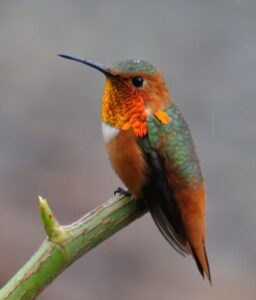
lifestyle. Their tiny bodies burn calories rapidly, and they rely on this sugar source for energy. It’s essential that the nectar is made correctly to ensure the health and safety of the birds.
What Do Hummingbirds Need in Their Nectar?
Hummingbirds primarily need sugar, which they use for energy. In the wild, they get sugar from the nectar of flowers. To recreate this in your hummingbird feeder, you need to provide the right ratio of sugar to water. The sugar provides the energy, while the water helps dilute it to a drinkable consistency for the birds.
The best nectar for hummingbirds is made from granulated white sugar and clean water. Avoid using honey, artificial sweeteners, or brown sugar, as these can harm the birds.
How to Make Hummingbird Nectar
Making hummingbird nectar is simple. Here’s the best and safest recipe:
Ingredients:
- 1 part white granulated sugar
- 4 parts water
Instructions:
- Boil the water. Bring the water to a boil to remove any impurities. Boiling the water also helps the sugar dissolve more easily.
- Dissolve the sugar. Add the sugar to the boiling water and stir until completely dissolved.
- Cool the nectar. Let the nectar cool to room temperature before filling your feeder. Never add hot nectar to a feeder, as it can burn the birds.
Once the nectar is cool, fill your feeder and hang it in an area where hummingbirds can easily find it.
Here’s a more comprehensive article about making hummingbird food and everything related to feeding hummingbirds.
Making hummingbird nectar
How Much Nectar Should You Put in a Feeder?
The amount of nectar to put in your feeder depends on the size of the feeder and the number of hummingbirds visiting your yard. Generally, it’s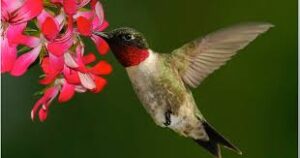
a good idea to fill the feeder halfway or according to the instructions provided with the feeder. Keep in mind that if the nectar is consumed quickly, you’ll need to refill it more often.
A small feeder may hold about 6 ounces of nectar, while larger feeders can hold up to 32 ounces or more.
Best Time to Feed Hummingbirds
Hummingbirds are most active during the warmer months, typically from spring to fall. During these months, they will feed frequently to prepare for migration or to maintain their energy levels. If you live in an area where hummingbirds are year-round residents, you can keep your feeders up all year long.
Seasonal Nectar Needs
- Spring and Summer: During the warmer months, nectar will need to be refilled more often. Hummingbirds are busy and can empty a feeder within a few days, especially if there are a lot of them.
- Fall: Hummingbirds feed heavily in the fall to prepare for migration. If you live in an area where they migrate, keeping a feeder up during the migration period can help them fuel up.
- Winter: In colder climates, hummingbirds may migrate to warmer areas. However, in milder climates, some species remain year-round. If you have year-round hummingbirds, keep the nectar fresh and feeders clean throughout the winter.
Necessary information about when to start and when to stop feeding hummingbirds
Choosing the Right Hummingbird Feeder
The type of hummingbird feeder you use can affect how many birds visit your yard. There are several designs available, but the most important
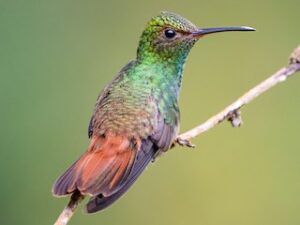
factor is that it is easy to clean and refill.
Types of Hummingbird Feeders:
- Glass Feeders – These feeders are durable and easy to clean. Glass feeders are often more aesthetically pleasing and come in a variety of designs.
- Plastic Feeders – Plastic feeders are lightweight and less likely to break if dropped. However, they can become scratched over time, which may attract mold.
- Tube Feeders – Tube feeders have small feeding ports where hummingbirds can drink. They are often more discreet and can hold a larger quantity of nectar.
- Platform Feeders – These feeders have flat surfaces where hummingbirds can perch while they feed. They may attract more than just hummingbirds, such as bees and other small birds.
Choose a feeder that suits your needs and is easy to clean. Cleaning is a crucial part of maintaining a hummingbird feeder. Feeders should be cleaned every 3-5 days, especially in warm weather when nectar can ferment quickly.
Here’s how to choose the best hummingbird feeder to use.
One of the best Hummingbird feeders that’s easy to take apart and clean is the HummZinger Ultra.
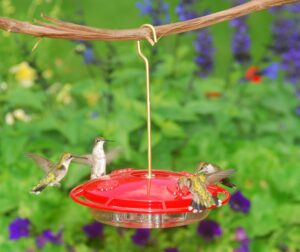
Aspects 12oz HummZinger Ultra With Nectar Guard.
The HummZinger Ultra 12oz Saucer Feeder is one of the best options for a hummingbird feeder that’s both easy to clean and maintain. This top-tier feeder features patented Nectar Guard tips—flexible membranes on the feeding ports that keep flying insects out while still allowing hummingbirds to feed freely. Plus, it comes with an integrated ant moat to prevent crawling insects from reaching the nectar, and the raised flower ports help divert rain, keeping the nectar fresh.
With a 12 oz capacity, this mid-size feeder offers plenty of space and can be hung or mounted on a post using the included hardware. It has four feeding ports and is made from durable, unbreakable polycarbonate. Whether you’re concerned about bees, wasps, or ants, this feeder is built for easy cleaning and insect protection.
Where to Place Hummingbird Feeders
The location of your hummingbird feeder plays a big role in attracting birds. Here are some tips for placing feeders in your yard:
- Sunny Spot – Place the feeder in a sunny location, but not in direct afternoon sun. The nectar will spoil more quickly in the heat.
- Near Flowers – If you have flowering plants that attract hummingbirds, hang your feeder nearby. Hummingbirds are drawn to bright colors, particularly red, and the proximity to natural food sources will help.
- Away from Predators – Keep the feeder away from areas where predators, such as cats, can easily access it. Hummingbirds need a safe space to feed.
- Near Shelter – Place the feeder near bushes or trees where hummingbirds can seek shelter if needed. It also gives them a place to rest between feeding.
More information on how to choose the best spot to hang your hummingbird feeder.
Common Mistakes to Avoid with Hummingbird Nectar
While making nectar is easy, there are some common mistakes you should avoid:
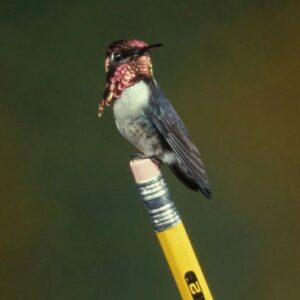
1. Using Honey
Never use honey in your hummingbird nectar. Honey can ferment quickly and lead to fungal infections, which can be harmful to hummingbirds. Stick to white granulated sugar.
2. Using Artificial Sweeteners
Avoid using artificial sweeteners, such as aspartame or stevia. These substances have no nutritional value for hummingbirds and could potentially harm them.
3. Not Cleaning the Feeder Regularly
Hummingbird feeders can quickly become contaminated with mold or bacteria, especially in hot weather. Always clean your feeders every few days to keep them safe for the birds.
Here’s extensive information on how to clean a hummingbird feeder, even when the nectar gets moldy.
4. Adding Red Dye
While hummingbirds are attracted to the color red, you don’t need to add red dye to the nectar. Most commercial feeders already have red coloring, and the dye could be harmful to the birds.
5. Leaving Nectar in the Feeder Too Long
If the nectar sits in the feeder for too long, it can spoil or ferment, which can be harmful to the birds. Replace the nectar regularly, especially in warmer weather.
Here’s a comprehensive guide to help you clean your hummingbird feederfor those times when the nectar is not changed soon enough and mold starts to grow.
Here’s a chart to help you keep your nectar fresh.
High temperatures…………Change nectar after
71-75……………………………6 days
76-80……………………………5 days
81-84……………………………4 days
85-88……………………………3 days
89-92……………………………2 days
93+………………………………change daily
Here is a good video on how to clean a hummingbird feeder
The Importance of Fresh Nectar
Fresh nectar is key to keeping hummingbirds healthy. Over time, nectar can ferment, attracting mold or bacteria. If the nectar turns cloudy or develops a sour smell, discard it and clean the feeder thoroughly before refilling it.
Attracting Hummingbirds Year-Round
If you want to attract hummingbirds year-round, consider planting native flowering plants in your yard. Some excellent options include:
- Bee Balm
- Fuchsia
- Salvia
- Trumpet Vine
- Columbine
These plants provide a natural food source for hummingbirds and can help supplement the nectar you provide in your feeders. Additionally, if you live in an area with cold winters, consider installing a heated hummingbird feeder to ensure the birds can still find food when temperatures drop.
Everything you need to know about attracting hummingbirds and the hummingbird plants that that are in bloom during each season they are here.
Frequently Asked Questions:
1. How can I keep ants out of my hummingbird nectar?
Easy way to ant proof an existing hummingbird feeder

Ants will be the easiest insects to keep out of your feeder so we’ll start with them. There is a device called an ant moat or ant trap or ant guard, that can be used to keep ants out of the hummingbird food. It’s usually a round plastic container that you can fill with water. The ant moat can be hung from the feeder hanger right in front of the feeder. The feeder is hung on the bottom side of the moat. Since the moat is filled with water and ants can’t swim, the ants can only climb down the feeder hanger until they get to the water. That is as far as they can go.
Ant moats come in various shapes and sizes and are made out of a few different materials. Some of them are decorative and add a nice appearance to your feeder set up. You can get red colored moats that will even help in the attraction of hummingbirds. Add a moat and your ant problem will be solved. You can even make your own moat if you want to try.
2. Can I keep bees out of my hummingbird feeder?
4 basic ways to try to prevent bees at your hummingbird feeder
1. Try using bee guards. Some feeders come with the yellow plastic mesh bee guards that fit over the feeding ports.
2. Try to move the feeder to a different location. Sometimes only moving it a short distance will keep the bees from finding it. They aren’t nearly as smart as hummingbirds and will give up a looking a lot quicker. Don’t worry, the hummingbirds will quickly locate it again. If this doesn’t work, try taking the feeder down for several days. Again, the bees will quickly give up looking, but the hummingbirds will find it once the feeder is hung back out.
3. Some people put up a feeder just for the bees! In the bee feeder they will use a sweeter nectar with a 1 to 3 ratio of sugar to water. Bees are more attracted to sweeter syrup and will leave the hummingbird feeder alone. Once the bees have found their feeder and are using it, move it away from the hummingbird feeder and hope the bees follow. Good Luck!
4. If all this fails to keep bees away from your feeder, don’t despair. Just get a good feeder that is already designed to keep bees and ants away from your hummingbird food.
Bee-Proof Hummingbird Feeders – Here is Your Answer – A Quick and Easy Way to Keep Bees Away
Nectar guard tips for hummingbird feeder
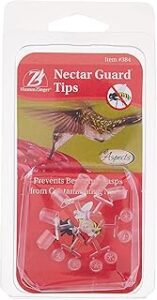
There are feeders that have special designs built into the feeder that will keep away bees and ants and will make your life a whole lot easier!

My favorite hummingbird feeder to use with the hummingbird food recipe is the HummZinger Ultra. It’s a great feeder that will solve all your pest problems.
Conclusion
Hummingbird feeder nectar is an essential part of attracting these beautiful birds to your yard. By following the right steps for making nectar, choosing the right feeder, and maintaining a clean feeding station, you can provide these creatures with a constant source of energy. Whether you’re a beginner or a seasoned birdwatcher, with a little care and attention, you can create a haven for hummingbirds in your own backyard.
By offering fresh, safe nectar and placing your feeders in the right spots, you’ll be rewarded with the sight of hummingbirds darting around your yard, feeding and delighting in the food you’ve provided. Happy bird watching!
If you found this article helpful please share it with your friends using the social bookmarking buttons on the left side of this page. Help everyone to increase their knowledge and enjoyment of feeding hummingbirds. Do it for the hummingbirds! It also helps my ranking so my information will be available to more people. The more people that see this vital information, the more the hummingbirds are helped. Thank for your help. The hummingbirds and I appreciate you very much!
Hummingbird Resources:
The Cornell Lab of Ornithology – Hummingbirds
Cornell partners with federal agencies to provide valuable scientific insights into hummingbird behavior, conservation, and field guides.
U.S. Fish and Wildlife Service – Hummingbird Conservation
This site offers detailed information about various hummingbird species, their habitats, and conservation efforts. It also provides resources on how to protect these fascinating birds.
National Park Service – Hummingbird Resources
The National Park Service offers insights into hummingbird species found in national parks, their behaviors, and their role in ecosystems, along with tips for observing them.
Smithsonian National Museum of Natural History – Birds: Hummingbirds
This resource provides educational materials on the role of hummingbirds in pollination and biodiversity, backed by scientific research and exhibits from the Smithsonian.

